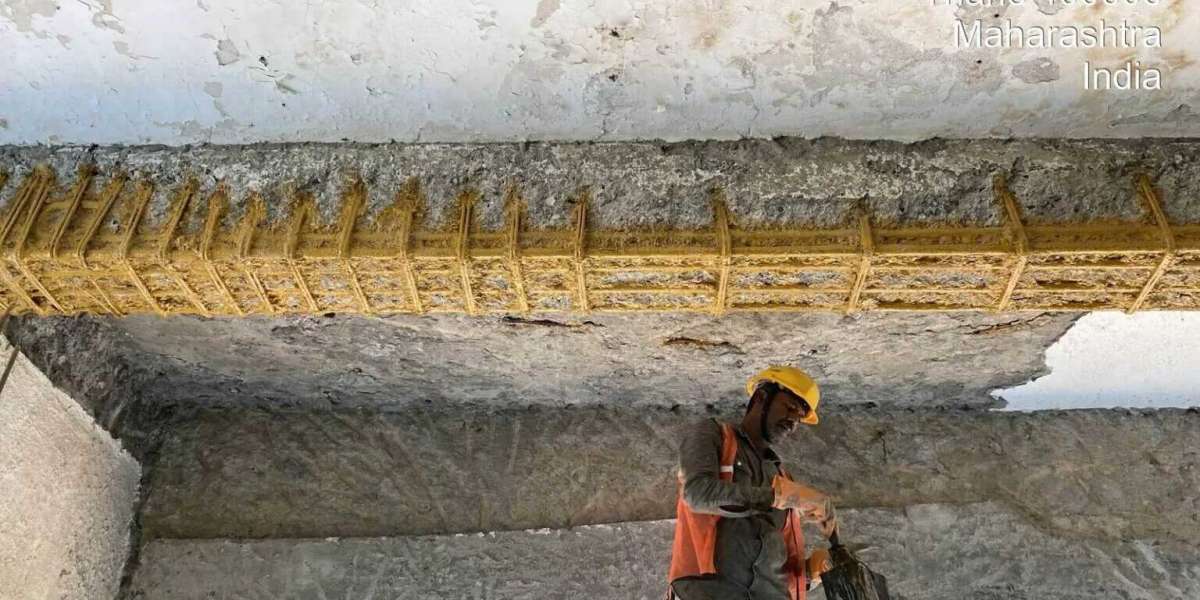Buildings, bridges, and infrastructure naturally age with time, requiring timely repair and rehabilitation of structures to ensure safety and longevity. Factors like environmental stress, material degradation, and heavy usage lead to cracks, leaks, and weakening of components. Rehabilitation goes beyond basic repair by restoring structural integrity, improving durability, and extending service life. With growing urban infrastructure, structural rehabilitation has become a critical need for modern cities.
Why Structural Repair is Essential
Ignoring early signs of structural distress can result in costly breakdowns and safety hazards. Issues like water seepage, corroded steel, and damaged concrete compromise strength and usability. Timely structural repair services prevent small problems from escalating into major failures. For homeowners and businesses alike, preventive repair reduces long-term costs and avoids sudden disruptions. In addition, a repaired structure contributes to property value and long-term sustainability.
Common Causes of Structural Damage
Several factors contribute to structural damage, ranging from natural aging to external influences. Poor construction practices, design flaws, seismic activity, and climate-related stress accelerate deterioration. Reinforced concrete structures often face issues like carbonation, chloride attack, and steel corrosion. Building rehabilitation contractors typically evaluate these underlying causes before planning repair strategies. Understanding the root causes helps in selecting appropriate techniques for rehabilitation and ensuring long-term performance.
Techniques Used in Structural Rehabilitation
Modern rehabilitation involves a wide range of techniques, depending on the condition and purpose of the structure. Methods include epoxy injection for crack repair, jacketing for strengthening columns, and carbon fiber wrapping for beams and slabs. Shotcreting and guniting are often used for restoring damaged surfaces. Advanced rehabilitation ensures not just restoration but improved resilience against future damage. Professional contractors use a mix of traditional and innovative techniques for effective solutions.
The Role of Carbon Fiber Wrapping
Among the most widely adopted modern methods, carbon fiber wrapping has become a preferred solution for strengthening concrete structures. This lightweight yet durable technique adds tensile strength without altering structural dimensions. It is particularly useful in retrofitting bridges, high-rise buildings, and industrial setups. Compared to conventional methods like steel jacketing, carbon fiber wrapping offers superior strength, corrosion resistance, and faster installation. Its effectiveness makes it a top choice for rehabilitation projects in urban areas.
Building Rehabilitation vs. New Construction
One of the most common debates property owners face is whether to demolish and rebuild or invest in rehabilitation. In most cases, repair and rehabilitation of structures is more cost-effective and time-saving than new construction. Rehabilitation preserves the building’s character, reduces waste, and ensures continuity of use. Especially for heritage buildings and urban properties with limited space, rehabilitation provides an economical and environmentally responsible alternative to rebuilding from scratch.
Importance of Professional Assessment
Before initiating any repair, a thorough structural audit is essential. Professional engineers and building rehabilitation contractors conduct detailed inspections using non-destructive testing methods to identify hidden damage. Based on this evaluation, a tailored rehabilitation plan is prepared. Without proper assessment, repairs may be temporary or ineffective. A professional approach ensures that structural rehabilitation addresses both visible and underlying issues, delivering long-term safety and compliance with building standards.
Benefits of Structural Rehabilitation
The advantages of structural rehabilitation extend beyond safety. A well-executed structural repair service improves functionality, reduces maintenance costs, and extends a building’s lifespan. Rehabilitation also enhances energy efficiency by sealing leaks and improving insulation. For commercial properties, it ensures uninterrupted operations, while for homeowners, it brings peace of mind. Importantly, rehabilitation aligns with sustainable construction practices by minimizing material wastage and promoting the reuse of existing structures.
Role of Technology in Rehabilitation
The use of modern technology has transformed the field of rehabilitation. Advanced scanning tools, 3D modeling, and non-destructive testing help engineers accurately map damages and plan interventions. Techniques like carbon wrapping for columns and beams are executed with precision using high-quality materials and machinery. Digital monitoring systems now allow continuous health tracking of structures post-rehabilitation. Technology ensures that repairs are not only durable but also aligned with international construction standards.
Rehabilitation for Heritage and Old Buildings
India is home to countless heritage structures that require specialized attention. Traditional repair methods often fail to preserve architectural aesthetics. In such cases, building rehabilitation contractors use tailored methods like lime-based mortars, fiber-reinforced polymers, and micro-concreting. Rehabilitation of heritage sites ensures cultural preservation while maintaining structural safety. For old residential buildings, rehabilitation avoids demolition, offering residents safer living conditions without disrupting historical or community identity.
Choosing the Right Contractors
Selecting the right contractor plays a crucial role in the success of rehabilitation. Experienced structural repair contractors not only understand technical challenges but also comply with safety and environmental guidelines. Always look for certified professionals with proven expertise in techniques like shotcreting, epoxy injection, and carbon fiber wrapping. Reliable contractors provide end-to-end solutions including assessment, execution, and post-repair monitoring, ensuring quality and durability of the rehabilitated structure.
Future of Structural Rehabilitation
As urbanization intensifies, the demand for repair and rehabilitation of structures will continue to grow. Innovations like self-healing concrete, nanomaterials, and AI-driven monitoring systems will further improve rehabilitation techniques. Governments and private organizations are also emphasizing sustainable rehabilitation as part of urban development. With advancements in technology and increasing awareness, the future of structural rehabilitation promises safer, smarter, and more sustainable infrastructure solutions.
The repair and rehabilitation of structures is no longer optional but essential for ensuring safety, sustainability, and cost-effectiveness. Whether it’s a residential building, commercial complex, or heritage monument, timely rehabilitation strengthens the structure while reducing environmental impact. By adopting modern methods such as carbon fiber wrapping and professional contractor services, property owners can ensure long-lasting performance. Investing in rehabilitation today secures the future of buildings and infrastructure for generations to come.



